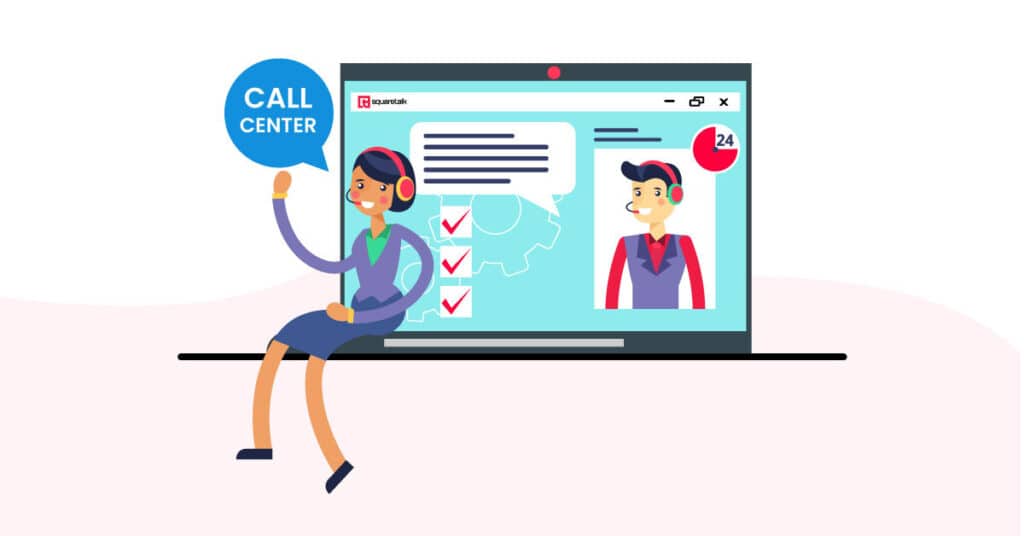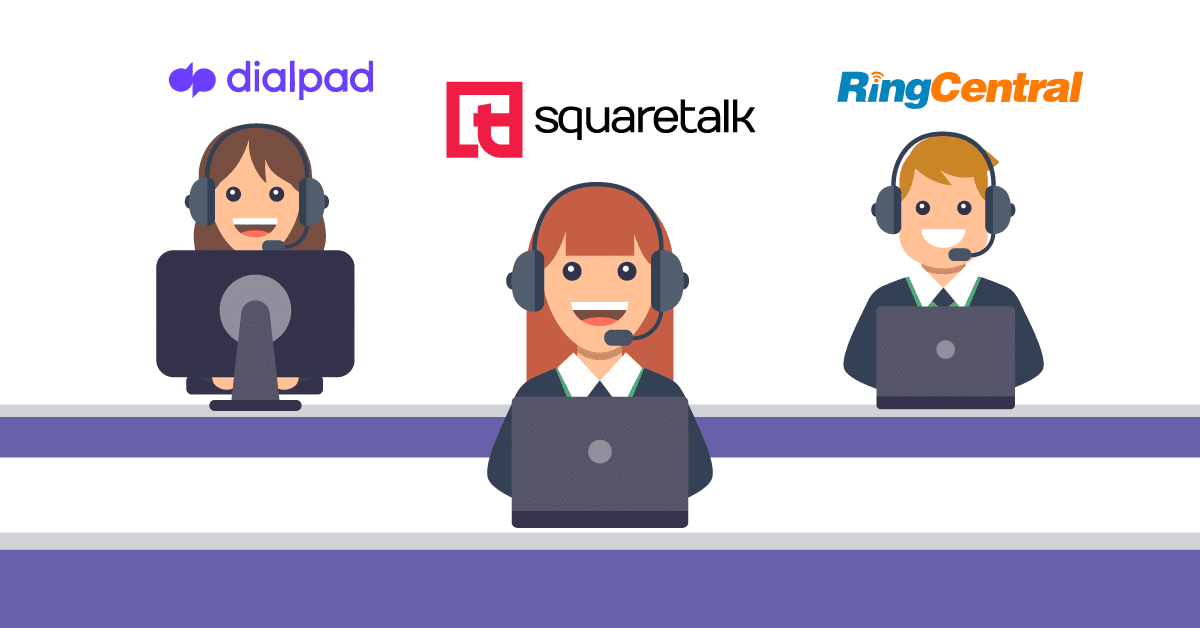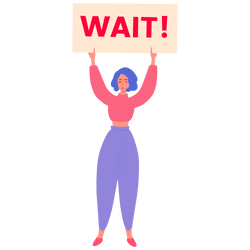Delivering exceptional customer experiences is now a must, not a choice for businesses that want to stand out from the competition. Having excellent call center service and consistent client communication is a big part of this.
But how can you boost customer satisfaction, agent performance, compliance, and overall success?
That’s where call center quality assurance (QA) comes in. It provides a structured way to evaluate, monitor, and improve interactions, ensuring that customer service or sales teams operate efficiently and consistently deliver value.
But modern QA encompasses much more than going over routine checklists. Call centers must adopt a proactive, holistic strategy to enhance the customer experience, drive revenue, and strengthen brand reputation.
Today, let’s dive into what call center QA is, how it benefits you, and the nine best practices we gathered from industry experts and our own experience.
What Is Quality Assurance in Call Centers?
In call centers, QA is a formal process that ensures consistent service quality. It includes checking calls, chats, or messages between your team and your customers.
This helps you spot and resolve service quality issues, ensure agents follow legal rules and company policies, and build strong customer relationships.
Call Center Quality Assurance: Why Your Business Should Care
A strong quality assurance process helps your call center stay efficient, provide quick and effective customer service, and ensure agents perform their best. An effective and well-implemented call center QA program can significantly impact your business with:
Higher Customer Satisfaction
A Calabrio research revealed that 97% of consumers and 98% of contact center managers believe customer service drives brand loyalty.
High-quality interactions make customers feel valued and understood, boosting their overall satisfaction. QA ensures that all callers receive a uniform level of service regardless of the agent they interact with. This leads to more loyal customers and positive reviews.
Better customer satisfaction also impacts revenue. Happy clients are more likely to repeat purchases, and Deloitte found that people will pay higher prices (up to 16% more) for products and services from businesses that provide a great customer experience.
Stronger Customer Support
A robust QA process ensures all agents resolve issues quickly and efficiently.
By identifying common problems, QA enables agents to improve their problem-solving skills, leading to faster resolutions and fewer repeat calls, balancing speed and quality.
Standardized call scripts and best practices ensure all agents follow approved communication frameworks and provide a uniform experience and messaging.
Especially in industries like finance, healthcare, and telecommunications, QA ensures compliance with data security laws (like GDPR, TCPA, etc.).
This not only enhances the support experience but also builds a reliable and trustworthy brand.
Also, read “Spam Detection and Brand Reputation: What You Need to Know“.
Agent Effectiveness
Quality assurance highlights top performers and pinpoints areas where agents need additional training. This data helps you create real-life interaction examples to practice handling difficult situations.
QA also enables you to make immediate corrections so agents don’t develop ineffective techniques or habits.
Feedback on tone, phrasing, and emotional intelligence helps agents structure their conversations better, reducing dead air or unnecessary delays.
It also fosters continuous improvement, which leads to higher confidence and adaptability. When agents know what they are doing well, they feel more motivated. Gallup reports that businesses with high employee engagement see an 18% boost in productivity, 10% in customer loyalty, and 23% in profitability.
Business Goals and Processes
QA data provides actionable insights that drive strategic decisions and improve service strategies. You can use them to refine sales pitches, objection handling, and upselling strategies for better conversion rates or increased customer lifetime value.
Businesses can refine their processes by analyzing trends and identifying recurring issues to better meet customer needs. This data-driven approach helps set realistic goals and allocate resources efficiently, so the call center performance supports company-wide goals.
QA data also ensures agents avoid misleading claims, incorrect information, or privacy violations when handling sensitive customer information.
Efficiency
A comprehensive QA program minimizes errors, optimizes agent performance, reduces operational waste, and streamlines customer interactions.
Businesses can limit costly repeat interactions by identifying common reasons for follow-ups or escalations. Quality assurance analysis can showcase areas where chatbots, IVR, and automation can handle repetitive inquiries to free agents and improve resource utilization.
Combined with call trends, QA reports also help optimize schedules to prevent overstaffing or understaffing.
Efficient processes allow agents to handle more calls without sacrificing quality, boosting overall productivity. QA analysis pinpoints where agents spend unnecessary time (e.g., long hold times, inefficient call scripts) so they can handle calls faster without lowering service quality.
Components of a Call Center QA Process
Call center quality assurance can be conducted either manually or through automation. Let’s break down what each approach involves:
Manual QA
Manual reviews involve real people listening to calls or reading chats. This human touch is vital for analyzing complex interactions, evaluating soft skills, assessing ethical dilemmas, and interpreting long conversations with multiple topics.
But manual QA can’t include every single call in a high-volume center. That’s where sampling comes in. You check a percentage of interactions to gauge the whole.
Quality Scorecards
Scorecards give a structured way to evaluate agent performance. Think of them as report cards for each call.
They cover greeting, empathy, resolution, and compliance. Each part earns points, with business-critical metrics having a bigger impact, which adds up to an overall quality score.
Call Monitoring
Real-time or recorded call reviews help you see how agents interact with customers. You monitor silently (without the agent and customer being aware of it) or with whisper/coaching mode for live evaluation and assistance.
Reviewing recorded calls later offers valuable insights for coaching and training sessions. This dual approach ensures that agents receive timely feedback and continuous improvement opportunities.
Agent Training and Coaching
Targeted training sessions address specific issues identified through QA. Coaching is personalized, offering direct call playback, one-on-one sessions, and actionable tips for improvement.
This hands-on approach helps agents refine their soft and tech skills and enhances their confidence. Regular training ensures that agents stay updated with best practices and company policies.
Also, read “7 Steps to Transform Customer Experience Through Effective Agent Training.”
Call Calibration
Calibration keeps everyone on the QA team following the same evaluation criteria. During these sessions, multiple QA leaders review independently one call, then compare notes and align scoring standards.
This eliminates discrepancies and guarantees that every agent is judged by the same criteria. Consistent calibration builds trust in the QA process and ensures feedback is fact-based and actionable.
Automated QA
Automated quality assurance uses AI and speech analytics to scan 100% of customer interactions. It can spot keywords, detect emotions, measure talk-to-listen ratios, and flag potential call-handling issues.
This speeds up evaluations, removes human bias, and frees your QA team for deeper reviews of complex calls.
QA Reporting & Metrics
QA reports provide detailed performance insights, which enable you to track agent performance trends, make data-driven decisions, and improve efficiency.
Contact centers often customize their QA framework to reflect the business focus (e.g., support-driven vs. sales-driven operations).
Some of the most commonly tracked metrics include:
- First-Call Resolution (FCR): It measures how often issues get solved on the first try. High FCR rates usually indicate effective customer support and reduce the need for repeat calls. In sales, the first call resolution rate is relevant for upselling, cross-selling, or closing a deal on the first attempt.
- Average Handle Time (AHT): It tracks the average duration of each call. Balancing AHT with quality ensures operational efficiency without compromising service in customer support. Longer calls could be acceptable in outbound operations if they result in a conversion.
- Customer Satisfaction (CSAT) & Net Promoter Score (NPS): These metrics gauge customer happiness and loyalty. They’re essential metrics for both support and sales.
- QA Score: It reflects how well agents adhere to procedures and meet quality standards. It provides a clear indicator of overall agent performance.
- Call Transfer Rate: It monitors how often calls are passed between agents or departments. Lower transfer rates typically indicate better issue resolution capabilities or a good lead qualification process.
- Compliance Metrics: These are vital in regulated industries, like healthcare or finance. These metrics ensure that agents follow legal requirements and company policies, such as data protection laws and Do Not Call Lists.
At Squaretalk, we integrate top call center metrics into our reporting dashboards, providing actionable insights that drive continuous improvement and align with your business goals.
9 Call Center Quality Assurance Best Practices
According to a Statista report, 39% of customer service leaders say they have an optimized QA process. Meanwhile, 46% of call center operators still consider theirs “developing.”
At Squaretalk, we’ve spent years collaborating with call centers, refining our Quality Assurance approach to ensure you can provide exceptional customer experiences.
Based on our research and conversations with industry experts, here are nine best practices to elevate your call center’s QA game:
1. Define Clear Business Goals
Start by pinpointing how to align business strategy with QA.
Whether it’s reducing average handle time by 0.5 seconds or boosting CSAT scores by 20%, clear objectives provide direction and ensure measurable improvements.
When your goals are well-defined, your team knows what to focus on, making tracking progress and celebrating milestones easier.
- Prioritize QA metrics based on industry and call center type (e.g., compliance for FinTech, upselling for sales teams, FCR for support).
- Regularly review insights and adjust strategies based on customer needs and business shifts.
2. Foster a Customer-Centric Culture
A customer-first mindset brings the best QA results. Everyone in the organization should prioritize customer satisfaction, empathy, and problem resolution, leading to higher retention and brand loyalty.
- Train agents to identify client intent.
- Promote active listening and soft skill training.
- Share QA feedback with sales or product teams.
3. Establish Clear Criteria and QA Scorecards
Different types of calls require different evaluation criteria. For instance, a technical support call is assessed differently than a sales call.
Still, a standardized QA scorecard ensures fair, objective reviews while helping agents understand expectations.
- Develop QA scorecards that evaluate critical aspects of calls, such as script adherence, professionalism, empathy, and information accuracy.
- Include both qualitative (tone, engagement) and quantitative (call resolution, accuracy) aspects.
- Make these scorecards transparent to agents so they know their expectations.
- Regularly review and update scorecards to ensure they remain relevant to evolving business goals.
This approach builds trust and provides a fair system for measuring performance.
4. Measure Critical KPIs
Tracking the right Key Performance Indicators (KPIs) is essential to ensure that QA improvements lead to real business impact. A recent industry report found that companies with a strong KPI framework are 50% more likely to reach their business goals than those without one.
- Align QA analysis with your business goals. For example, sales teams should focus on outbound metrics like conversion rates and upsell success, while support departments should monitor FCR and CSAT scores.
- Use QA data to promptly identify trends, address issues, and adjust strategies as needed.
5. Utilize the Right Call Center Software
Choosing the right call center software is a game-changer for QA.
Go for a user-friendly and scalable software with features like:
- Call Recording : Allows for detailed review and feedback.
- Performance Dashboards : Provide a visual overview of individual and team performance.
- AI-Powered Analytics : Uses artificial intelligence to automatically identify patterns, predict customer behavior, and track key phrases, sentiment and tone.
- Speech Analytics : Detects compliance risks, sentiment trends, and common pain points.
Squaretalk Pro Tip : Ensure your software integrates smoothly with your existing CRM to maintain a consistent data flow and holistic performance tracking.
6. Monitor Calls in Real-Time
Real-time call monitoring allows supervisors to provide immediate feedback and intervene when necessary.
This proactive approach can prevent minor issues from escalating into major problems, preserving customer relationships.
Additionally, agents feel supported knowing that supervisors are actively engaged in their performance.
- Use silent monitoring to observe without disrupting calls.
- Implement whisper coaching to assist agents during high-stakes interactions.
- Set alerts for key risk indicators (e.g., customer escalations, non-compliance, repeated phrases, like “I’ve called multiple times about this.”, “I want to speak to a manager.”, and “It’s too expensive.”)
7. Provide Consistent Feedback to Agents
According to recent stats, 96% of employees value regular feedback, and those who receive recognition from management are 69% more likely to perform better.
Regular feedback is vital for agent growth and confidence. Positive reinforcement builds morale, while constructive criticism fosters improvement.
- Balance positive and constructive feedback, giving actionable and personalized insights instead of generic advice.
- Encourage agents to self-assess their calls, promoting accountability and self-awareness.
- Use specific examples from calls (e.g., “You handled the customer’s objection effectively by…”).
8. Conduct Regular Coaching and Training Sessions
Continuous training keeps your team sharp and adaptable to new challenges. Instead of one-off training events, schedule regular coaching sessions based on QA data to address ongoing needs.
- Conduct workshops on common challenges like handling demanding customers, resolving technical issues, or improving upselling skills in combination with personalized training based on individual agent performance.
- Use role-playing exercises to simulate real-life scenarios and enhance problem-solving abilities.
9. Recognize and Reward Effective QA Initiatives
Recognition and rewards are powerful motivators for maintaining high standards that align with your business goals (e.g., high FCR rates or low compliance violations). This can improve employee engagement, performance dependability, and agent experience.
- Implement an incentive program where team members can earn prizes for consistently high QA scores.
- Celebrate achievements publicly, such as during team meetings, through company newsletters, or leaderboards.
- Offer both monetary and non-monetary rewards, such as bonuses, extra time off, or professional development opportunities.
Conclusion
An effective call center quality assurance program is essential for elevating customer experience, boosting agent performance, and driving business success.
By defining clear goals and KPIs, fostering a customer-centric culture, and implementing standardized scorecards, you can create a foundation for continuous improvement. A robust QA process helps you leverage advanced call center software technology and real-time monitoring, to improve training sessions, recognize and reward agent excellence.
Ready to level up?
Discover how Squaretalk can streamline your QA process and help you offer next-level customer experiences. Our platform brings you call analytics, unlimited free recordings, and real-time reporting—all in one place.
Book a demo today!
FAQ
What is call center quality assurance, and why is it important?
A: Call center quality assurance (QA) is the process of monitoring and evaluating agent interactions to ensure they meet established standards and provide excellent customer service. It is important because it:
- Ensures consistency in customer interactions.
- Identifies training needs and performance issues.
- Enhances customer satisfaction and loyalty.
- Ensures compliance with regulations and company policies.
How does quality assurance enhance customer satisfaction and agent performance?
A: QA enhances customer satisfaction and agent performance by:
- Providing feedback to agents for continuous improvement.
- Identifying and addressing service gaps.
- Recognizing and reinforcing positive behaviors.
- Ensuring that customer interactions are handled professionally and effectively.
What are the key components of an effective call center QA program?
A: An effective QA program includes:
- Clear Evaluation Criteria: Defined standards for assessing interactions.
- Regular Monitoring: Consistent review of calls, chats, and emails.
- Agent Feedback: Constructive feedback sessions to discuss performance.
- Training and Coaching: Programs to address identified skill gaps.
- Performance Metrics: Tracking KPIs to measure improvement over time.
How can real-time monitoring and feedback improve service consistency?
A: Real-time monitoring allows supervisors to:
- Identify issues as they occur.
- Provide immediate feedback to agents.
- Ensure adherence to scripts and protocols.
- Maintain high service standards across all interactions.
What tools and technologies support modern call center QA processes?
A: Modern QA processes are supported by tools such as:
- Sentiment Analysis Analytics Analyzes call recordings for compliance and sentiment.
- Quality Monitoring Features: Automate the evaluation and scoring of interactions.
- Customer Profiles with Conversation History: Provides context for customer interactions.
- Real-Time Dashboards: Offer insights into agent performance and customer satisfaction metrics.






